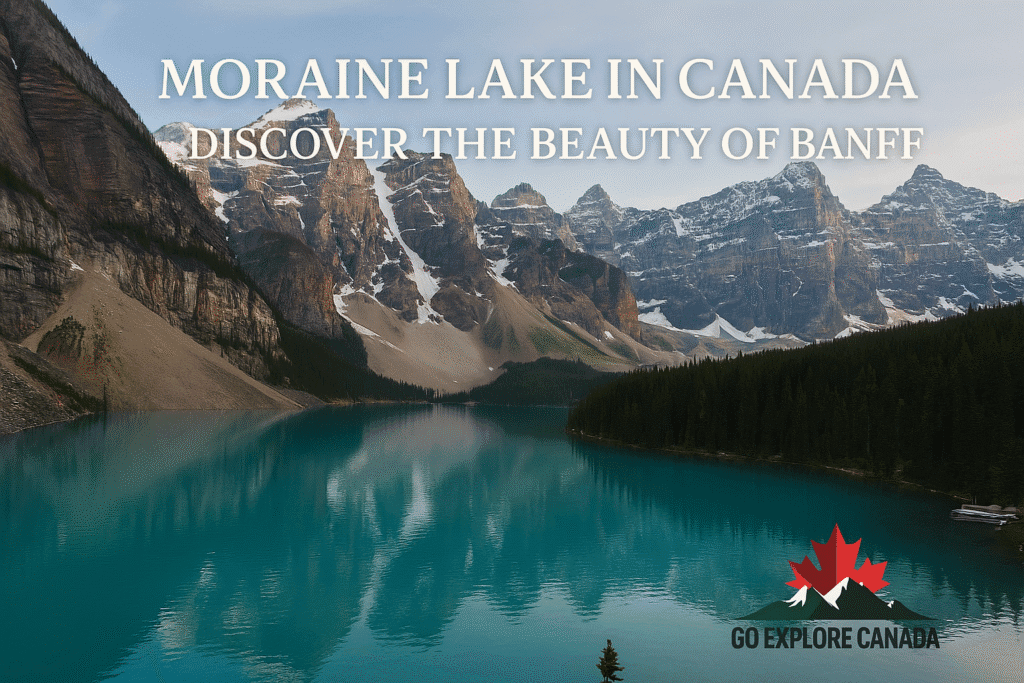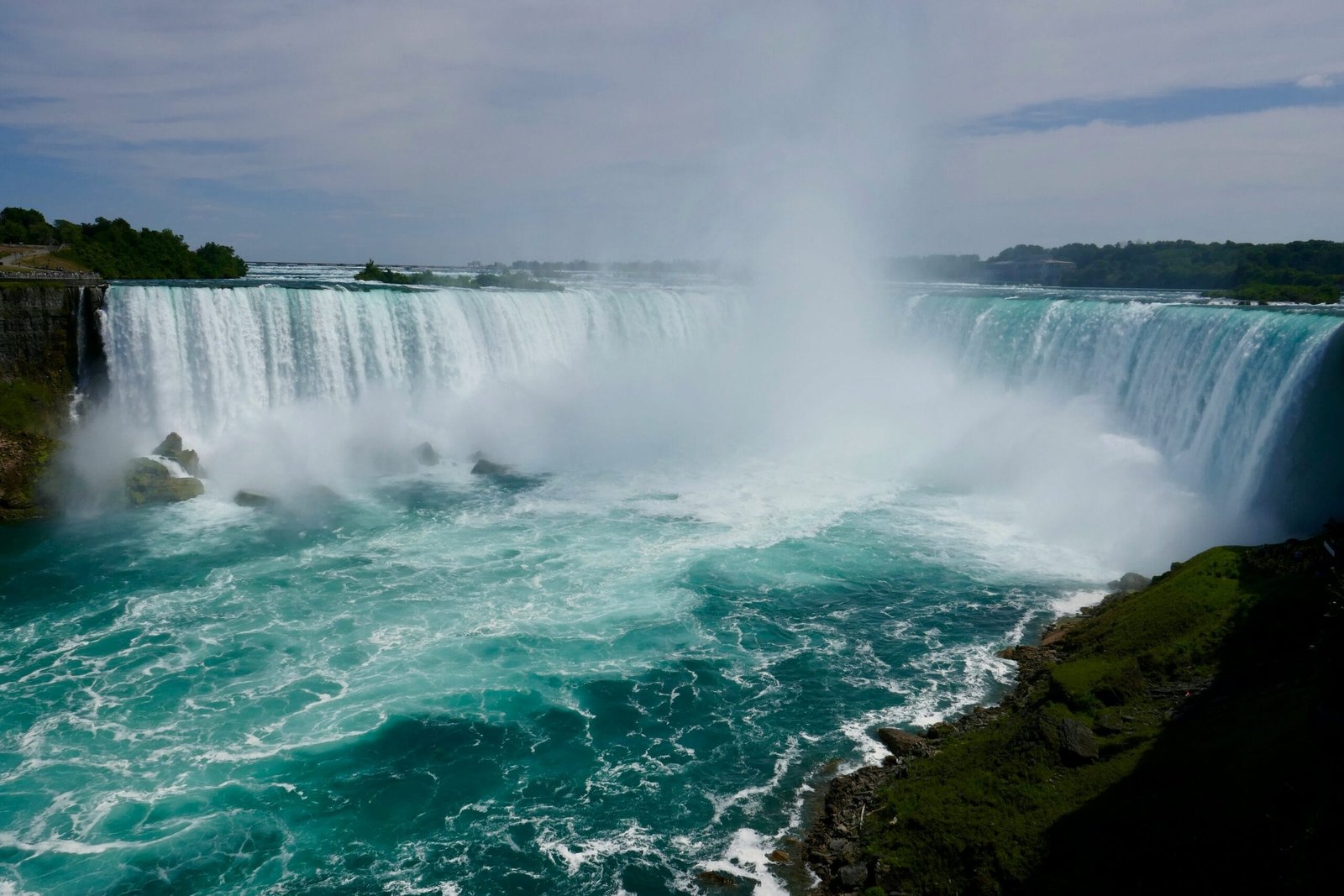
Moraine Lake in Canada – Discover the Beauty of Banff
Posted in Destinations
Moraine Lake is one of the most beautiful and photographed lakes in the world — and it’s right here in Alberta, Canada. With its bright turquoise water, tall mountain peaks, and peaceful atmosphere, it’s a must-visit spot in Banff National Park.
In this guide, Go Explore Canada shows you everything you need to know: how to get there, the best time to visit, what to do, and how to enjoy it stress-free.
📍 Where Is Moraine Lake?

Moraine Lake is located in Banff National Park, Alberta. It sits in the Valley of the Ten Peaks, just 14 km from Lake Louise and about 1 hour from the town of Banff.
📌 Google Maps link: Moraine Lake Location
🕒 Best Time to Visit Moraine Lake
Moraine Lake is only accessible during the summer and early fall. The access road is closed in winter due to avalanche risk.
🗓️ Open Season:
- Typically late May to mid-October
- Peak season: July to September
🚫 Closed: Mid-October to late May (snow and road conditions)
🚗 How to Get to Moraine Lake (New Rules)
As of 2023, personal vehicles are no longer allowed to drive to Moraine Lake during the open season. But don’t worry — there are a few easy options:
✅ Shuttle (Recommended)
- Parks Canada Shuttle from Lake Louise Lakeshore
- Reserve online in advance at Parks Canada Reservations
✅ ROAM Transit (from Banff)
- Take ROAM bus Route 10X to Moraine Lake
✅ Guided Tours
- Join a day tour from Banff or Lake Louise
- Good option if you want to skip planning
💡 Tip: Go early morning or late evening for fewer crowds and better photos.
🌄 What Makes Moraine Lake Special?
Moraine Lake is famous for its:
- Bright turquoise water (caused by glacier silt)
- Dramatic mountains surrounding the lake
- Calm, quiet setting for photography and reflection
📸 Want the best view? Climb the Rockpile Trail — it’s a short 10-minute walk and gives you the postcard-perfect photo.
🥾 Things to Do at Moraine Lake
1. Hiking
- Rockpile Trail – short, scenic (easy)
- Consolation Lakes Trail – peaceful and less crowded
2. Photography
- Golden hour (sunrise or sunset) is magical
- Bring a tripod for long exposures
3. Canoeing
- Rent a canoe at the Moraine Lake Lodge (if available)
- Paddle out for a peaceful lake view
🏕️ Where to Stay Near Moraine Lake
- Moraine Lake Lodge – very limited and books fast
- Lake Louise Village – great base with more hotels
- Banff Town – more dining + hotel options, 1 hour away
🔗 Also read: Places to Stay in Jasper
❄️ Is Moraine Lake Open in Winter?
No. The road to Moraine Lake is closed from mid-October to late May.
But you can:
- Visit nearby Lake Louise
- Explore winter hikes in Banff
- Come back in summer for Moraine Lake
❓ FAQ: Moraine Lake, Canada
Both are beautiful, but Moraine Lake is quieter and less developed — great for nature lovers.
No. You need to take a shuttle, ROAM bus, or tour.
Just 10 minutes up the Rockpile Trail.
Yes, but rentals are limited — arrive early or check with Moraine Lake Lodge.
No, it’s only open from late May to mid-October due to snow closures.
🧭 Final Thoughts
If you’re visiting Banff, don’t skip Moraine Lake. It’s peaceful, iconic, and one of the most breathtaking places in Canada. Plan ahead, go early, and enjoy every moment.
✨ Explore more, stress less — with Go Explore Canada.

Welcome to GoExploreCanada.com, your go-to guide for exploring Canada. Discover tips, travel guides, and stories about the breathtaking landscapes, vibrant culture, and delicious cuisine from coast to coast. Join us on an adventure to uncover the hidden gems of Canada!
“Canada Is My Therapy” Hiking & Camping Shirt – Explore. Camp. Breathe.
Price range: $20.50 through $34.00










